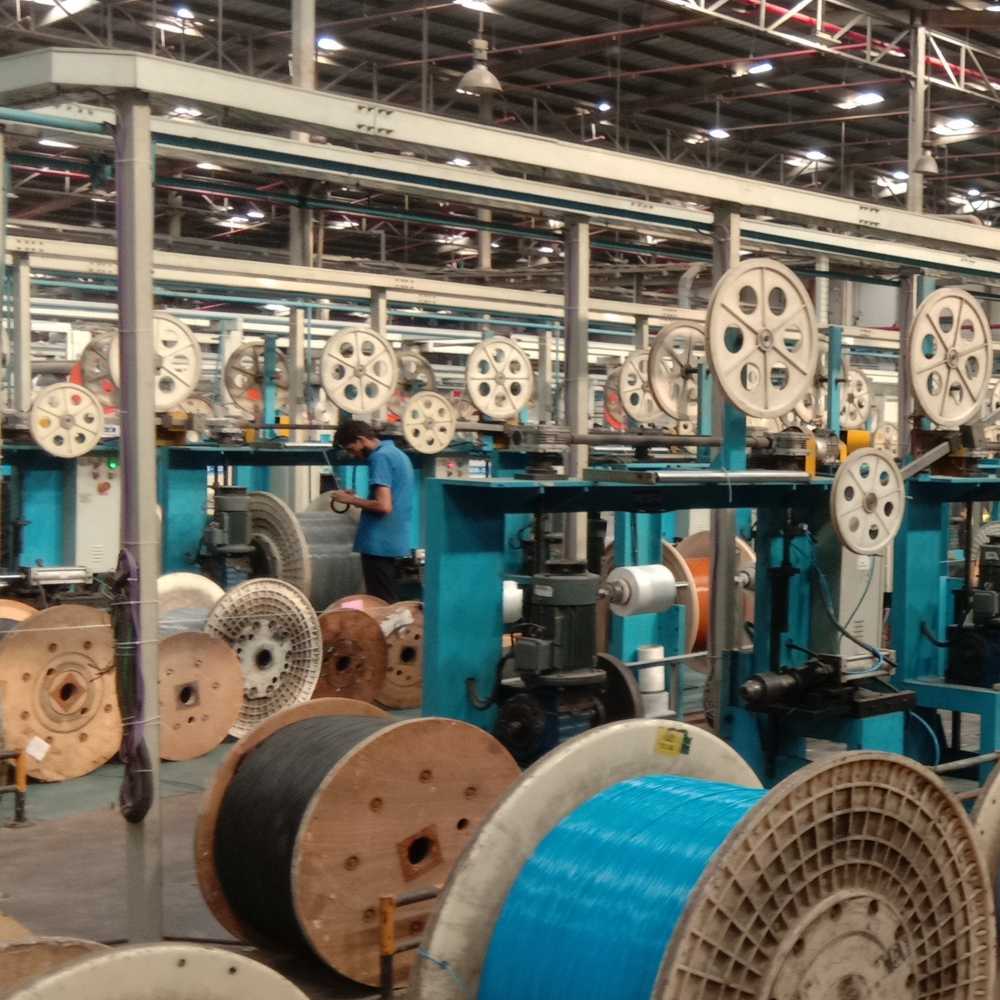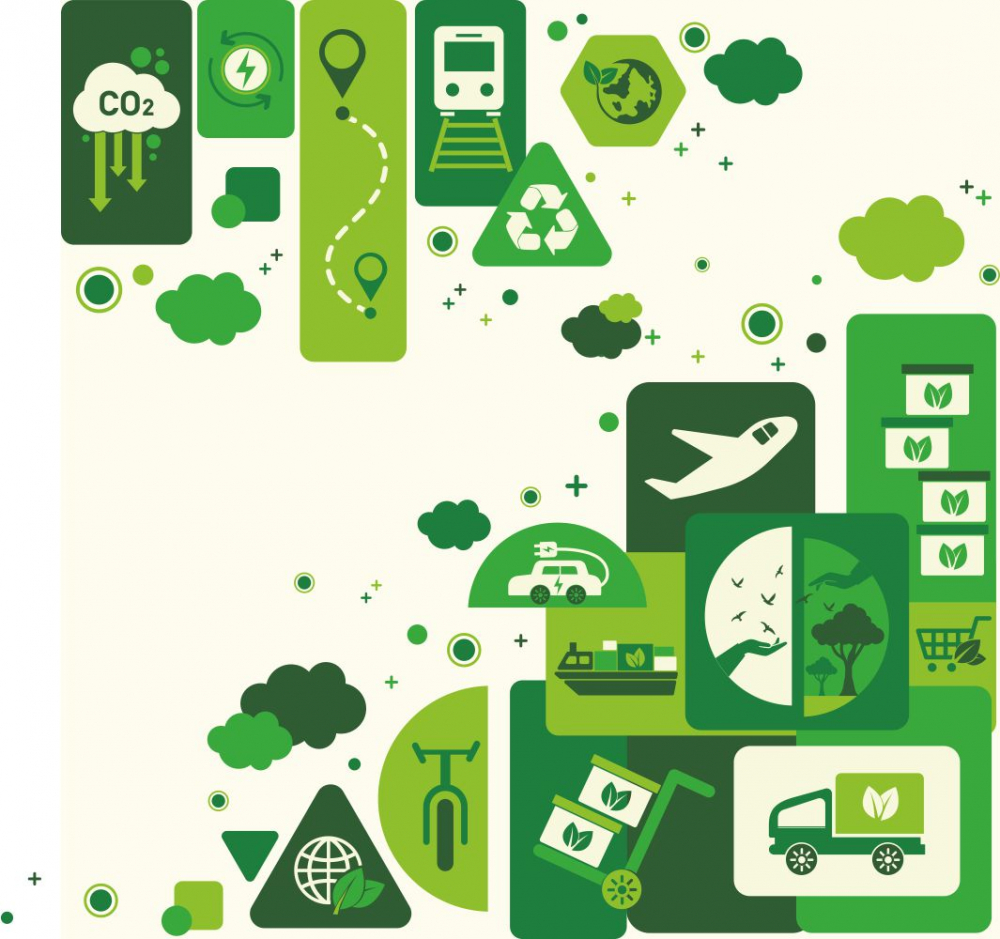“We have adopted a clean, lean and green approach to creating a responsible supply chain. Our Sustainability, User-Friendly, Reliable and Efficient (S.U.R.E) packaging is just one initiative to achieving our vision. Driven by a firm belief in the 5Rs (Remove, Refuse, Reduce, Reuse and Recycle), we designed a process to sustain this environmentally responsible supply chain. The well defined process included forming a focused team with internal and external members; applying scientific techniques; implementing ideas and actions across locations and finally verifying results and continuously improving outcomes,” shares Nikhil Puri, Global SCM Head – Communication Cabling Solution, Sterlite Technologies Ltd. (STL).
Why was circular economy an important pillar for your organization?
In the linear economy, raw natural resources are taken, transformed into products and get disposed of. On the contrary, a circular economy model aims to close the gap between the production and the natural ecosystems’ cycles – on which humans ultimately depend upon. This means, on one hand, eliminating waste – composting biodegradable waste or, if it’s a transformed and non-biodegradable waste, reusing, remanufacturing and finally recycling it. On the other hand, it also means cutting off the use of chemical substances (a way to help regenerate natural systems).
Additionally, people are getting more vocal, criticizing companies involved in (or staying quiet on) deforestation, pollution, or using unsustainable materials. Brands selling poor-quality products use non-recyclable packaging or allowing ecosystem destruction is being ‘called-out’ on social media. There are certain reasons why circular economy is important pillar for our organization. We need to secure the resources. Working out which materials are critical for our business, and which are most at risk, was a great starting point for this approach. Is future demand likely to exceed supply? Are there geopolitical factors at play, likely to affect price or access? Swapping from finite, potentially risky or under-pressure resources to safe, sustainable materials provides resource security and price stability. We focused on regeneration; applying the circular economy mantra that ‘all waste = food’ for resources used for the product and the production process might involve regenerating our own resources or partnering with a specialist recycler. Resource security and regeneration have the additional benefit of reducing business risks, and diversifying both the locations and materials in our supply chain also helped. Circular economy approaches build stronger brand reputations, by doing things better and doing better things.
What were the challenges that came your way in implementing S.U.R.E?
The major challenge was the type of materials that we use. Traditionally these materials are not easily recyclable and we had to apply a different approach to counter this challenge. These are special materials. In line with the same, we came up with recycling of at least 100% of packaging materials. We wanted to create value for our Company, Customers and the Society through environmentally conscious initiatives. We called this initiative as S.U.R.E (Sustainable, User- Friendly, Reliable, Efficient) Packaging. The approach that we followed up for this was of 5R i.e Remove, Refuse, Reduce, Reuse, and Recycle.
Please highlight the technical aspects of S.U.R.E.
What does it take to save 8000 trees every year? It turns out, just a small shift in perspective. It’s no surprise that our resources are under threat from overuse, though you might not know that a major player contributing to this phenomenon is industrial packaging, that uses onetime use cardboard packaging. Alarmed by the increasingly dire reports of the far-reaching environmental impact of packaging across the globe, STL has made a move towards being part of the solution instead of the problem, moving away from traditional packaging for our products towards more sustainable options.
To this end, STL has already replaced the norm of one-time-use corrugated cardboard boxes with high-density polyethylene corrugated (HDPE) ones, which are continuously recycled. We go a step further to ensure that the boxes are returned and reused. As the materials that we use were not easily recyclable, so we needed to work internally as well as externally. We formed a CFT comprising of Internal (Supply Chain, Design, Quality, and Production) & External (Customers, Experts, and Supply Partners) stakeholders and this whole project was driven under Supply Chain umbrella. We interacted with IIP (Indian Institute of Packaging) for this initiative. We applied scientific techniques like Brainstorming, Value Engineering, Value Analysis, Mechanical Testing, Simulation, and Environmental Impact & Testing. The various teams went back to drawing board and devised solutions which were in sync with the ideology of S.U.R.E. The ideas were to think out of the box and not some conventional ways of packaging.
What are the tangible benefits gained from the innovations?
To ensure a long-term impact, we identified initiative through external collaboration. Together with our external partners, we diagnosed the problems with materials, subsequently changed materials and process and finally improved packaging practices and better utilization of resources. We optimized the design of spools to reduce the weight and re-foaming for reuse to reduce the annual consumption of plastic. Furthermore, all our wood or paper-based packaging is recycled. And the results show. Our combined cross plant initiatives have thus far saved 4,300 metric tonnes of wood and paper, and 830 metric tonnes of plastic – the equivalent of saving approximately 8000 trees. We have also succeeded in reducing the emission of CO2 by 5,300 metric tonnes. The tangible benefits that derived from these innovations were to the tune of 20-25% in cost. Also, direct impact to Mother Nature was that we were able to save 2000 trees. With this also there was an impact on shipments wherein we were able to save 31% reduction in shipments.
Another feather in our cap is two of our units reporting 100% sustainable packaging (reuse and recycle) for inbound materials and we are not done yet. Our next move is to work with our customers to bring in 100% sustainability for outbound packaging. At STL, we are continuously working on new methods to foster sustainability and create more value for our customers.
How can companies strike a balance between business goals and sustainability simultaneously?
Companies need to understand very quickly that sustainability is also a business goal. The companies which are sustainable will be able to deliver consistent goals. Long gone are the days wherein you can sit on your laurels and enjoy the success. With fast changing technology, you never know when your business model may become redundant. To keep pace with the fast-changing paradigms, you need to continuously evolve and sustain. By definition, “Sustainability is a business approach to creating long-term value by taking into consideration how a given organization operates in the ecological, social and economic environment.” To do this, the culture must change and culture in my sense is always top driven. Sustainability cannot be the KPI of one department. It must be mapped in every department individual goals.
How is Sterlite (Cabling Solutions) focusing on new age innovations?
Sterlite has already been nominated Top 25 Innovative Industrial companies in India. Sterlite gives a lot of impetus on innovation. We have a COE (Centre of Excellence) across all our manufacturing units. Our R&D teams have the best talent pool from across the globe and they have been delivering new solutions for our customers continuously. We have a lot of programs that are running in the company. Innovation is being driven by the top management wherein the thought process and the culture have been changed. Now Innovation is not only thought by the R&D department but by all functions equally. Innovation is the one of the KPIs of each department.
Year 2020, though adverse on all counts, proved to be highly innovative for corporates in many aspects. What is your view on this and enlist some of the innovations done in supply chain?
For me, being resilient is as important as being innovative. In fact, the supply chains have to become more resilient. Supply Chains across the globe should be more agile, more collaborative. Supply Chain should develop their supply base strategy; need to inculcate the Risk Management culture. There are risks in decision making and that need to be identified using Market Intelligence. The companies need to be future ready. Some of the key things that we have done in Supply Chain are:
- Cloud Based Data Management in Supply Chain
- Implementation of Integrated Business Planning
- Implementation of SURE packaging
- Adoption of Procurement platform which has reduced a lot of NVAs (Non-Value Activity)
Where do you see supply chain changing the shape of things to come?
Today’s globalized supply chain network has been optimized to identify minimum lead times at the lowest possible price. We want electronics ‘Made in China’, so we can buy them cheap. However, rapid political developments, a shift towards consumers buying niche products and now, this pandemic has revealed the weakness that lies at the heart of this model of manufacturing. The hidden costs of single-source dependencies and poor flexibility in adapting to real-time shocks have been laid bare. Today, we will tolerate higher prices for certain goods, if it means we get them faster and more in line with our aspirations. As a result, the change that had already begun, towards more flexibility and multi-level sourcing, will accelerate tremendously. Over the next years, we can expect to see a broad overhaul of our supply chain infrastructure.
GLOBALIZATION TO GLOCALIZATION
Logistics hubs will re-emerge at the regional level. To eliminate single-source dependencies, and to establish a flexible and adaptable supply chain, sub-system suppliers and component suppliers will source, assemble, and deliver from their own backyards. The supply chain has become a main protagonist everywhere, it has moved from playing a “behind the scenes” organizational role to being a prime driver of the company business. As volumes become more variable, supply chains must become more adaptive, especially if, as forecasts suggest, large suppliers and logistics operators in the supply chain industry must prepare for major catastrophic events such as weather events (fires, flood, tsunami), lethal pandemic outbreaks, strikes, social unrest and associated disruptions. Businesses in general are looking at their whole supply chain ecosystem. There are dependencies on some partners in the value chain which are called as Sole Suppliers. Traditionally businesses have been comfortable with these sole suppliers as the risk was averted due to the strategic partnership with these suppliers. But now with pandemic, these sole suppliers are posing risk as pandemic has not left anyone untouched. Businesses are moving to develop alternate supply chain to mitigate these risks. Companies are making sure that their resilience plans are in place. In fact, the supply chains must become more resilient.
Supply Chains across the globe should be more agile, more collaborative. Supply Chain should develop their supply base strategy, need to inculcate the Risk Management culture. There are risk in decision making and that needs to be identified using Market Intelligence. Businesses must become more adaptive with the change in environment. We are living in a VUCA (Volatile, Uncertain, Complex, Ambiguous) world. Supply Chain Management will be the fulcrum around which the businesses will flourish. It will all boil down to the scenarios wherein more agile, and more adaptive to change supply chains will drive the businesses forward. Businesses must become more predictive rather than reactive.
What are the upcoming trends that we can look forward to?
The upcoming trends which we should really watch out for are AI (Artificial Intelligence), ML (Machine Learning), Industry 4.0. Blockchain is also gaining widespread recognition progressively. All these are part of IoT (Internet of Things). In supply chain, the digitization is coming up wherein we need to work on the following:
- Match dynamically demand and supply. Differentiate for products and consolidate for platforms.
- Contain multi-sourcing complexity
- Stop RFI/RFP. Co-create more to achieve best solutions, risk reductions and risk sharing
- Move from static sourcing to dynamic sourcing

Categories

Magazine Editions






















